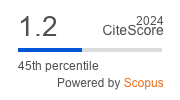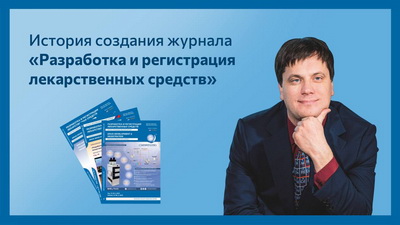Determination of Active Pharmaceutical Substances Dissolution Rate by Laser Light Diffraction Method
https://doi.org/10.33380/2305-2066-2020-9-1-75-81
Abstract
Aim. Development of the method for determining the dissolution rate of active pharmaceutical substances by laser light diffraction with validation elements.
Materials and methods. Determination of the dissolution rate of moxifloxacin hydrochloride was carried out in water for laboratory analysis of purity level 1 (ultra-pure water) obtained on the Milli-Q® Integral, the quality of which corresponds to ISO 3696:1987. To achieve this goal, a pharmacopoeia method of research was used – low-angle scattering of laser light (laser diffraction method); instrument equipment – laser dispersion meter Malvern 3600 EC.
Results and discussion. An additional analytical method for determination of API dissolution rate by laser light diffraction method was developed. Validation studies on parameters: precision (repeatability, intra-laboratory/intermediate), linearity, analytical region. Precision was estimated based on the results of 18 measurements, the coefficient of variation was 8 %, the relative error of average 4 %. Linearity was determined (correlation coefficient R = 0.992). The range of application of the analytical technique depends on its purpose, is determined in the linearity analysis and ranges from 5 · 10-3 g/ml to 5 · 10-2 g/ml.
Conclusion. The proposed methodology can be used as an independent test of the properties of pharmaceutical substances both at the stage of their development and preclinical studies, and in the process of quality control in addition to the existing pharmacopoeia test to assess the solubility of pharmaceutical substances, expressed in terms of conditional.
Keywords
About the Authors
E. V. UspenskayaRussian Federation
Elena V. Uspenskaya
6, Miklukho-Maklaya st., Moscow 117198
I. V. Kazymova
Russian Federation
Ilaha V. Kazymova
6, Miklukho-Maklaya st., Moscow 117198
T. V. Pleteneva
Russian Federation
Tatyana V. Pleteneva
6, Miklukho-Maklaya st., Moscow 117198
T. E. Elizarova
Russian Federation
Tatyana E. Elizarova
2, Chermynskaya str., Moscow, 127282
A. V. Syroeshkin
Russian Federation
Anton V. Syroeshkin
6, Miklukho-Maklaya st., Moscow 117198
References
1. Wang J., Liao Y., Xia J., Wang Z., Mo X., Feng J., He Y., Chen X., Li Y., Lu F. Mechanical micronization of lipoaspirates for the treatment of hypertrophic scars. A Brief Review of the FDA Dissolution Methods Database. Stem Cell Res Ther. 2019; 10: 2–10.
2. Syroeshkin A. V., Uspenskaya E. V., Pleteneva T. V., Morozova M. A., Maksimova T. V., Koldina A. M., Makarova M. P., Levitskaya O. V., Zlatskiy I. A. Mechanochemical activation of pharmaceutical substances as a factor for modification of their physical, chemical and biological properties. International Journal of Applied Pharmaceutics. 2019; 11: 118–123.
3. Timur S. S, Yöyen-Ermiş D., Esendağlı G., Yonat S., Horzum U., Esendağlı G., Gürsoy R. N. Efficacy of a novel LyP-1-containing selfmicroemulsifying drug delivery system (SMEDDS) for active targeting to breast cancer. Eur J Pharm Biopharm. 2019; 136: 138–146.
4. Guidance for Industry. Process Validation: General Principles and Practices. U.S. Department of Health and Human Services Food and Drug Administration. USA. 2011. Available at: https://www.fda.gov/media/71021/download.
5. Rezvyh Ju. A., Koval’skaja G. N. The modern approaches to improving the regional system of assurance and quality control of medicines. Siberian Medical Journal. 2013; 6: 104–106. (in Russ.).
6. Shahram E., Abolghasem J., Hadi V., Ali S. Are Crystallinity Parameters Critical for Drug Solubility Prediction. Journal of Solution Chemistry. 2015; 44: 2297–2315.
7. Gildeeva G. N. Polymorphism: the influence on the quality of drugs and actual methods of analysis. Good Clinical Practice. 2017; 1: 5660 (In Russ.).
8. Aksenova V. V., Kanunnikova O. M., Karban’ O. V., Suslov A. A., Lad’janov V. I., Tukmacheva K. A., Chuchkova N. N., Smetanina M. V. Effect of mechanoactivation on composition, structure and physico-chemical properties of creatinine and creatine. Chemical Physics and Mesoscopy. 2019; 21(1): 103–114. (in Russ.).
9. Savjani K. T., Gajjar A. K., Savjani J. K. Drug Solubility: Importance and Enhancement Techniques. International Scholarly Research, Network ISRN Pharmaceutics. 2012.
10. Soldatov A. I. The structure and surface properties of carbon materials. Bulletin of ChelSU. 2001; 1: 155–163. (in Russ.).
11. Christel A. S. Bergström, Per Larsson, Computational prediction of drug solubility in water-based systems: Qualitative and quantitative approaches used in the current drug discovery and development setting. International Journal of Pharmaceutics. 2018; 540(1–2): 185–193.
12. OFS.1.2.1.0005.15 «Solubility» State Pharmacopoeia of the Russian Federation. XIV edition. – M.: Ministry of Health of the Russian Federation. 2018. Available at: http://femb.ru/femb/pharmacopea.php (in Russ.).
13. Komarov T. N., Medvedev Y. V., Shohin I. E., Boldina Y. E., Lvova A. A., Melnikov E. S., Fisher E. N., Ivanov R. V., Maksvitis R. J. Development and validation of moxifloxacin determination in human plasma by HPLC-UV method. Drug development & registration. 2016; 3: 174–179. (In Russ.).
14. McGee E. U., Samuel E., Boronea B., Dillard N., Milby M. N., Lewis S. J. Quinolone Allergy. Pharmacy. 2019; 7: 97.
15. The United States Pharmacopeia and National Formulary USP 35NF 31. The United States Pharmacopeial Convention, Inc.: Rockville, MD (2013)
16. OFS.1.2.1.0008.15 «Determination of particle size distribution by laser light diffraction». State Pharmacopoeia of the Russian Federation. XIV edition. – M.: Ministry of Health of the Russian Federation. 2018. Available at: http://resource.rucml.ru/feml/pharmacopia/14_1/HTML/555/index.html#zoom=z (In Russ.).
17. Zhaolin L., Xiaojuan H., Yao L. Particle Morphology Analysis of Biomass Material Based on Improved Image Processing Method. Int J Anal Chem. 2017: 1–9. Doi: http://dx.doi.org/10.1155/2017/5840690.
18. Henry N. С. Diffraction before destruction. B Biol Sci. 2014; 17: 1–13.
19. ISO 13320:2009 Particle Size Analysis–Laser Diffraction Methods. Part 1. General Principles. 2009.
20. Anfimova E. V., Uspenskaya E. V., Pleteneva T. V., Syroeshkin A. V. Solubility kinetics of drugs studied by LALLS method in water solutions with various hydrogen isotope content. Drug development & registration. 2017; 1: 150–15 (In Russ.).
21. OFS.1.1.0012.15 «Validation of analytical methods». State Pharmacopoeia of the Russian Federation. XIV edition. – M.: Ministry of Health of the Russian Federation. 2018. Available at: http://resource.rucml.ru/feml/pharmacopia/14_1/HTML/276/index.html#zoom=z (In Russ.).
22. Uspenskaya E. V., Anfimova E. V., Syroeshkin A. V., Pleteneva T. V. Kinetics of Pharmaceutical Substance Solubility in Water with Different Hydrogen Isotopes Content. Indian Journal of Pharmaceutical Sciences. 2018; 80: 318–324.
23. Uspenskaya E.V., Keshishian A.A., Nikiforova M.V., Pletneva T.V., Syroeshkin A.V. Development and validation of the method of kinetic evaluation of medical substance topiramat dissolution by laser diffraction of light method. Drug development & registration. 2018; 2(23): 72–76. (In Russ.).
Review
For citations:
Uspenskaya E.V., Kazymova I.V., Pleteneva T.V., Elizarova T.E., Syroeshkin A.V. Determination of Active Pharmaceutical Substances Dissolution Rate by Laser Light Diffraction Method. Drug development & registration. 2020;9(1):75-81. (In Russ.) https://doi.org/10.33380/2305-2066-2020-9-1-75-81










































